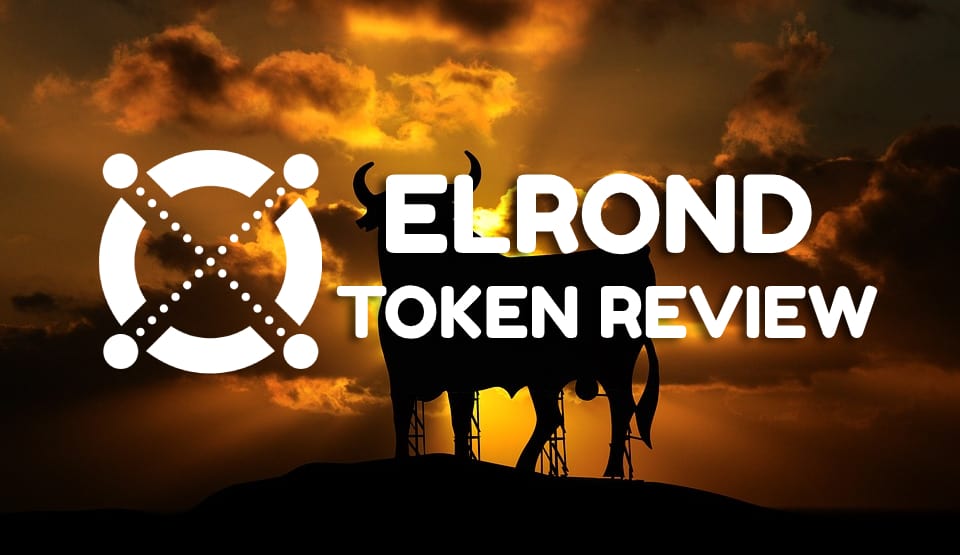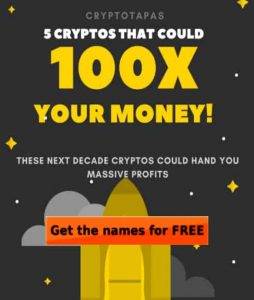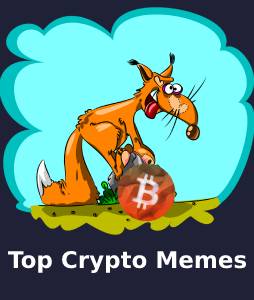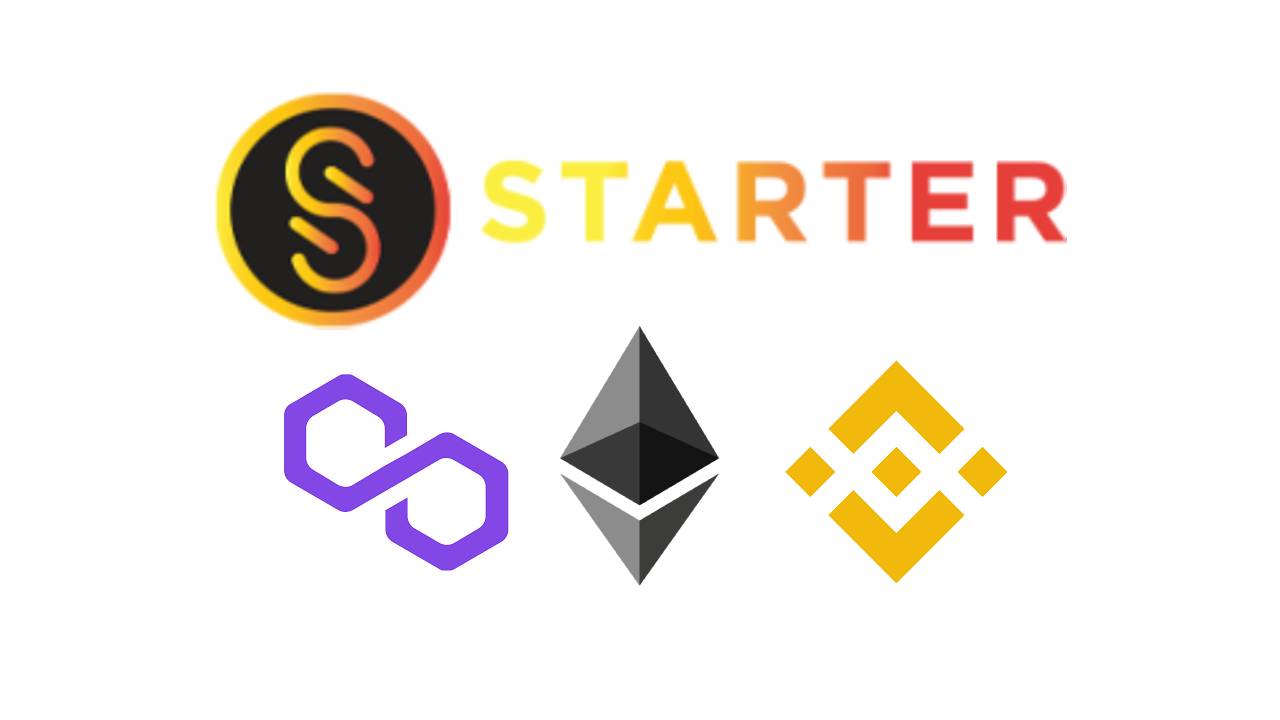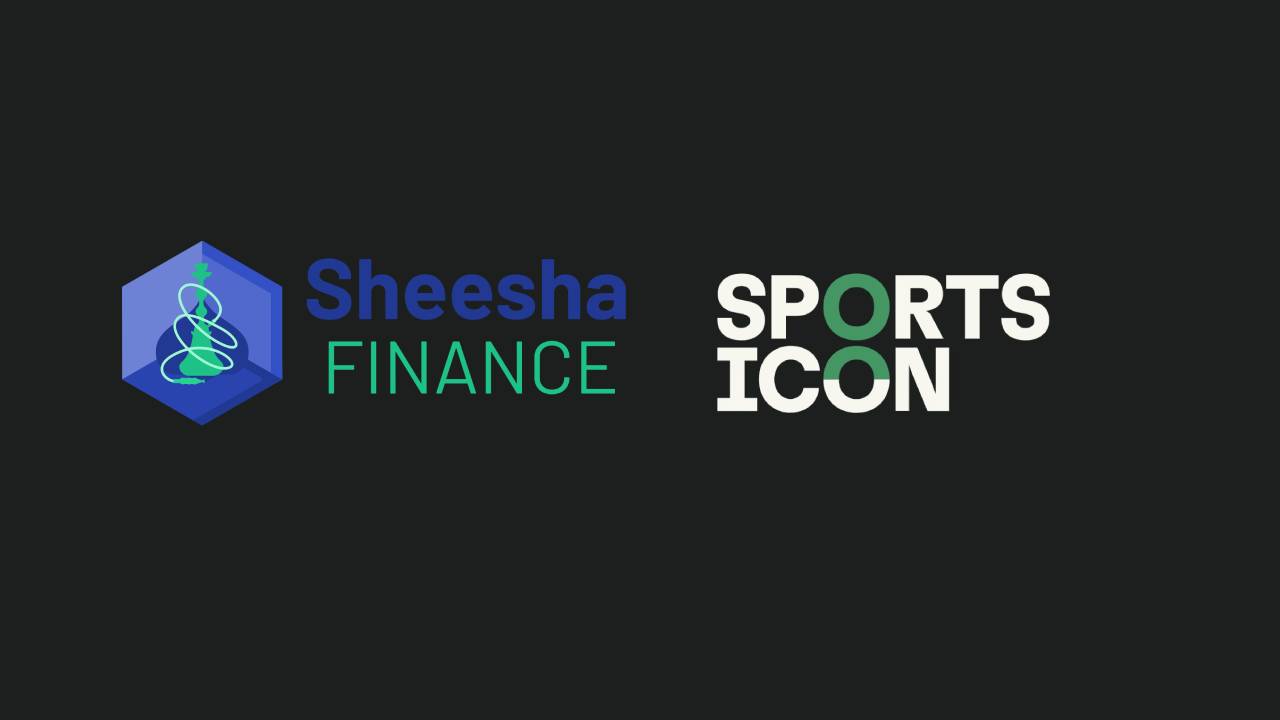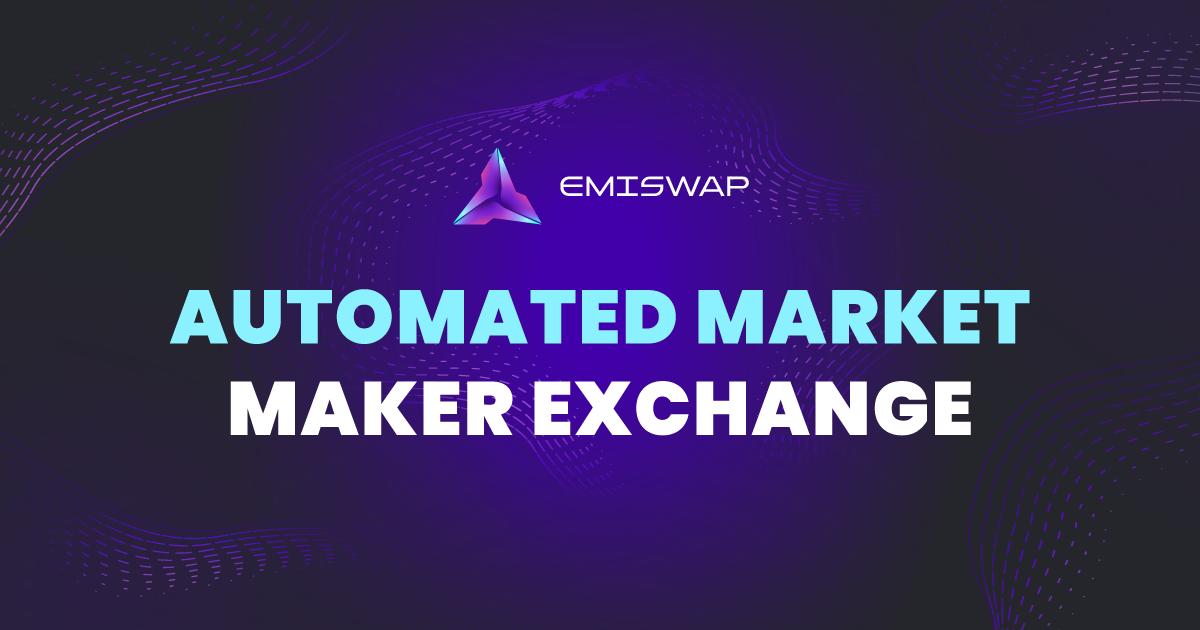Elrond(ERD) Token Review
Would the modern magic of internet work if we were still using dial ups? If you are from the generation that doesn’t know what a dial up means, it looks like this:
Essentially, it would take you 30 seconds to 3 minutes to connect to the internet and open a text email.
If you were to load the YouTube website at the 56kbps speeds (considered good in those early internet days), it would take you probably 20 minutes.
We tried to load YouTube at 56 kbps speeds and after 7 minutes we were still waiting for the page to load. Compare that to the broadband that loads YouTube in a split second.
You can test what it feels to browse at 56kbps here.
While it is quite an extreme and dramatic example, I think that is the closest you can come when you try to explain what Elrond is in comparison to Ethereum.
At its current state, Ethereum processes 15 transactions. Compare that to Elrond which processed 35000 transactions during the test net run.
Obviously, the test environment is different compared to the real world.
Ethereum 2.0 could solve some of Ethereum 1.0’s flaws with claims of 100,000 to Million TPS. That is something we have to wait and see.
OK, what is Elrond?
There have been at least 100 Ethereum killers on the market since the birth of Ethereum. Ethereum (Classic) couldn’t kill Ethereum, so we are not sure others will.
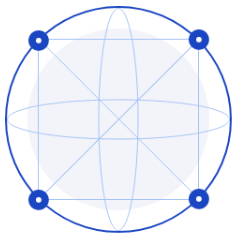
Ethereum currently has serious scalability and TPS issues. Listen to this clip where Vitalik admits that Ethereum 1.0 cannot scale.
ICO prospectus: "Build scalable apps on Ethereum."
Mod: "Youre saying the concept of launching something that doesn't scale then rebuilding it as something thats scalable was part of initial the plan."
Lubin: "We knew it wasn't going to be scalable for sure."
Vitalik: *nods* pic.twitter.com/MBSFkQeugj
— grubles (@notgrubles) September 20, 2019
Ethereum 2.0 could be a whole another story. However, it is not a reality at the time of this writing.
Elrond on the other hand already delivers on what Ethereum 2.0 is ‘aiming’ to.
In a somewhat hyped elevator pitch, Beniamin Mincu, CEO of Elrond, said that Elrond is a 1000x improvement over other protocols in the blockchain space.
In a nutshell, Elrond offers a high throughput blockchain ecosystem that makes use of sharding that ‘scales’ (adapts) with the demand put on the network.
This adaptive sharding helps Elrond to be efficient, secure, scalable and provide a high rate of TPS.
This is why Elrond boasts itself as “A highly scalable, fast, and secure blockchain platform built for internet scale.”

What makes Elrond Special?
The strength of Elrond, in our opinion, is not in its novel or groundbreaking innovation.
It is in the simplicity of picking the ‘best’ of all the blockchain protocols that preceded and only solve the issues that these protocols failed to solve.
For instance, Elrond picks sharding from Zilliqa but makes it ‘adaptive’. It picks interoperability from Cosmos and implements it at Virtual Machine level.
Elrond says it as much in its whitepaper: “Elrond was designed upon and inspired by the ideas from Ethereum, Omniledger, Zilliqa, Algorand and ChainSpace.”
If we are to compare blockchain revolution to the internet, we have to assume that many companies will be replaced by newer solutions.
Whether Elrond is that ‘next generation’ blockchain or if it will be eaten away by another project is something we have to wait and see.
For now, let’s focus on what Elrond promises that makes it special.
“1000x improvement” over its predecessors
“Elrond is a new blockchain architecture that can bring 1000x cumulative improvement in scalability, throughput, transaction speed and transaction cost,” that is how Beniamin Mincu, CEO of Elrond, explains the project.
Scaling
Elrond promises to be able to ‘adapt’ to the scaling needs of the network. The project uses what is called ‘adaptive sharding’.
For the technically inclined, here an excerpt from the whitepaper:
“Elrond proposes a dynamically adaptive sharding mechanism that enables shard computation and reorganizing based on necessity and the number of active network nodes. The reassignment of nodes in the shards at the beginning of each epoch is progressive and nondeterministic, inducing no temporary liveness penalties.”
Sharding is the process of breaking down a big problem into small ones to solve it faster.
Security
Elrond uses a modified version of Algorand’s Secured Proof of Stake concept.
Secure Proof of Stake randomizes the ‘selection of a node’ so that security is not compromised through 51% brute force.
Elrond goes one step further on this sPoS model where it introduces ‘stake and rating’ criteria to be even eligible to be randomly picked as a node.
Adaptive sharding is the ability to scale up or down the number of shards depending on the transaction at hand.
Obviously, that is a dumbed down English explanation of it, as we understood it.
This makes selection of nodes ‘random’ while taking meritocracy into consideration.
The rating is dynamic and is recalculated at the end of each execution.
ERD Token
Many investors in the crypto space don’t care what the project does if the tokenomics are weak.
-
Transaction fees
Elrond’s utility is acting as the ‘native’ token on the network to pay for the transactions. The more transactions that take place on the network the more Elrond will gain in demand.
-
Staking
Elrond offers crazy returns on staking. This means, there is a probability that many tokens will be locked out of circulation which could boast the price.
-
DApp Deployment
Like any other blockchain network, Elrond token acts as the ‘utility’ on the DApps deployed on the network.
-
Validator reward
Validators are rewarded for their work and Elrond token is used in disbursing these rewards.
Team
Crypto space is excited about the team that is involved in the Elrond project.
Just looking at the profiles of CEO, COO and CIO showcases that you are not dealing with a group of wannabes.

The team brings in the right mix of technical prowess and business acumen.
Many blockchain projects either lack a strong technical forte or suck at running the business. Elrond may not have that problem due its ‘experience mix’.
Partnerships and Integrations
This is one project that is making a lot of buzz in the past two months, with continuous updates and partnerships. Here are a few:
ERD and Indacoin

Indacoin is a fiat gateway with over 500K users which allows users to buy crypto with Visa or Mastercard using USD, GBP, EUR and many other currencies.
ERD and dfinance

Elrond will work together with dfinance to enable users to build Elrond native assets as well as allow Elrond users to access DeFi platforms on dfinance.
ERD and LDV

ERD tokens are now available on LDV, a Romanian crypto exchange and a fiat gateway. ERD/EURO and RON/ERD pairs will be available on the platform.
ERD and Crypto.com
Users of Crypto.com can now buy ERD token on their app. Crypto.com is considered one of the easiest modes of buying and selling crypto. With deposits and withdrawals of erd token enabled on crypto.com, the token is now available for over 3 million users of crypto.com
ERD and Utrust
Elrond integrated with one of the leading payment gateway for ecommerce, Utrust.
ERD and Swipe

ERD is partnered and now available on swipe, a multi currency digital wallet. Swipe has over 500K users.
The other partnerships and integrations include Stateless Money, Staked, Moonpay, FinNexus, and many others.
Elrond is gaining traction fast and furious. Will it amass enough steam to surpass other blockchain protocols?
We have to let the time answer that question.
ERD Token Metrics
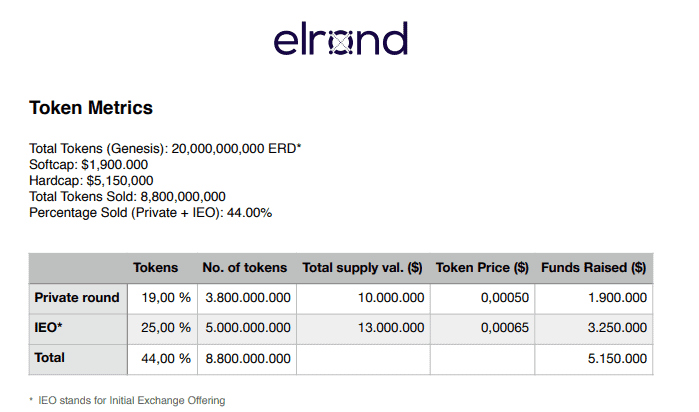
Source: Elrond
*These token metrics are about to change after the EGLD swap.
Some pump and dump chat
You will notice that Elrond is showcased on the Samsung official video introducing Samsung Blockchain.
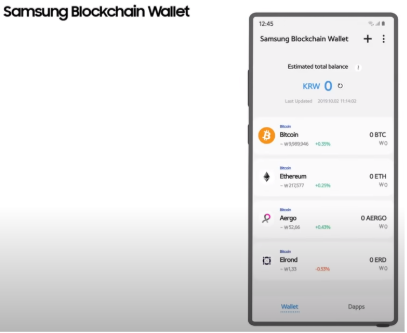
First and foremost thing everyone is excited about is its mainnet launch.
We believe the rise in price is not just because of its mainnet launch, but also the high staking rewards that are expected to yield after the mainnet launch.
With over 5 Billion ERD tokens already staked during the testnet, it is possible that more users will stake their tokens for passive income.
Risk factors
Late to the party, not to the town!
There are a lot of blockchain platforms in the blockchain space. Many promise sun and the moon with 100K to a million transactions per second.
Most of these promises are just that as of now, promises.
Elrond is late to this TPS race, however, it could do what others have failed: Actually live up to its claims on the Main net.
In this sense, Elrond is late to the TPS party but it is not late to ‘make a mark’ for itself in the blockchain town.
More advanced projects in the space
What happens when Ethereum addresses its TPS issues, scalability aspects and makes it incredibly easy for people to launch DApps?
Ethereum already has a massive penetration in the space that it could leverage.
Beyond Ethereum, there are other projects like Zilliqa that could pose stiff competition to projects like Elrond.
And, do not forget Cardano, a project that is preparing its arsenal for a hostile takeover of the crypto space.
What is ahead in Elrond’s Roadmap
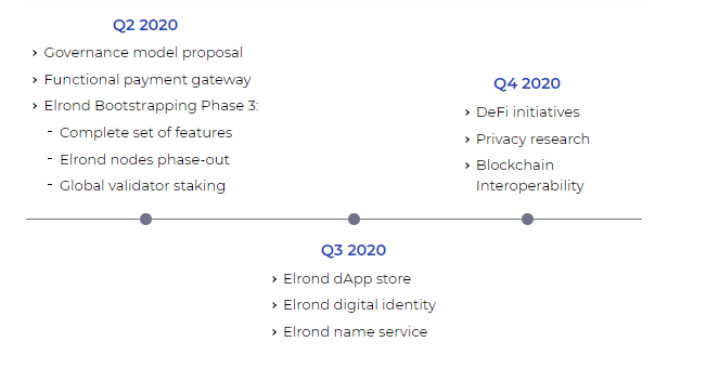
Source: Elrond
Elrond Swap
ERD to eGLD
How to swap ERD
Pros of Elrond Token Swap
Cons of Elrond Token Swap
IMPORTANT DISCLAIMER
Everything in this article is an opinion, not an advice of any kind. This material has been prepared for general informational purposes only and it is not intended to be relied upon as accounting, tax, investment, legal or other professional advice. Please consult with a professional for specific advice.
We do not endorse or guarantee the accuracy of the information and claims made.
All product and company names are trademarks™ or registered® trademarks of their respective holders. Use of them does not imply any affiliation with or endorsement by them.

